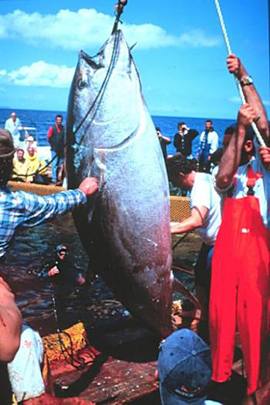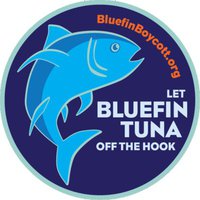 More than 20,000 people have agreed to boycott bluefin tuna as part of a campaign to save the fish, driven to the brink of extinction by the voracious appetite of the sushi market. In the first week of the boycott, consumers from all 50 states and 91 countries signed a pledge not to eat bluefin or spend money at restaurants where the fish is on the menu.
More than 20,000 people have agreed to boycott bluefin tuna as part of a campaign to save the fish, driven to the brink of extinction by the voracious appetite of the sushi market. In the first week of the boycott, consumers from all 50 states and 91 countries signed a pledge not to eat bluefin or spend money at restaurants where the fish is on the menu.
There is reason to hope that campaigns like this can make a difference. In 1998, with North Atlantic swordfish populations on the verge of being wiped out, the NRDC launched a campaign that became wildly successful and resulted in new fishing restrictions.
After just a few years under the new regime, swordfish populations recovered to near-healthy levels, demonstrating that reasonable restrictions on commercial fishing practices can overcome the results of years of mismanagement.
“By voting with their wallets, consumers are saving bluefin tuna by keeping it off their plates and steering clear of sushi restaurants with the rare fish on their menu,” said Catherine Kilduff, a staff attorney at the Center for Biological Diversity, which created the new campaign after seeking Endangered Species Act protections for Atlantic bluefin in May. “Eating bluefin tuna is handing out a death sentence to the last remaining survivors of this majestic marine species.”
 Even though the western Atlantic stock of bluefin has dropped by more than 80 percent since 1970, and the eastern Atlantic stock by 74 percent between 1957 and 2007, bluefin remains on the menu of some restaurants. High market prices — a single bluefin tuna sold for $177,000 earlier this year — spur rampant illegal and unreported fishing.
Even though the western Atlantic stock of bluefin has dropped by more than 80 percent since 1970, and the eastern Atlantic stock by 74 percent between 1957 and 2007, bluefin remains on the menu of some restaurants. High market prices — a single bluefin tuna sold for $177,000 earlier this year — spur rampant illegal and unreported fishing.
While the international community fails to protect bluefin, thousands of consumers are now demanding action. Chefs and restaurant owners need to step forward like they did for the swordfish. 700 chefs at restaurants around the US removed swordfish from their kitchens.
JOIN THE BOYCOTT: Visit www.bluefinboycott.org and SHARE the campaign’s Facebook page.



















